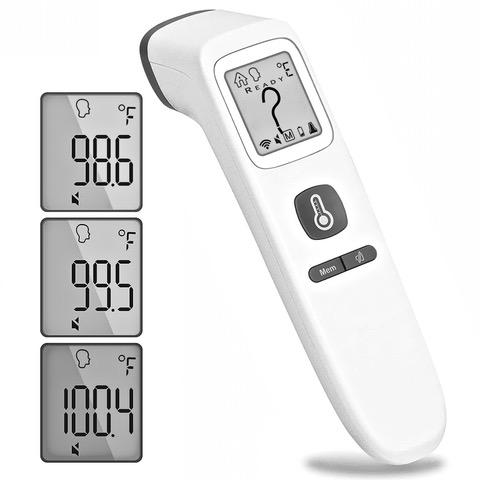After a couple days of coughing after a couple years of confinement, I went to the nearest walk-in for a rapid Covid test, a nucleic acid amplification test (NAAT).
A physician’s assistant had some questions.
“Do you have any symptoms?”
“A cough, fatigue, and a fever of 100.”
“100 is not a fever.”
“Really?”
“A fever starts at 100.4.”
“Oh, good.”
“Are you taking anything for it?”
“For what?”
“Your fever?”
“I thought I didn’t have a fever.”
“You don’t.”
“Then why would I take anything for it?”
“If you’re taking something, you might be repressing a fever.”
“Can I get canceled for repressing a fever?”
Despite the home test being negative — no pink — I had Covid-19. I was surprised and relieved; no one has been more careful and no one has been more comforted to find the virus as “mild” as advertised.
When chest congestion was detected, I was advised to see my family physician if breathing became labored in the coming days; bronchitis and pneumonia were possible. Forty-eight hours later, I called my internist for an appointment.
“Do you have any symptoms?”
“Fatigue, a cough, and my breathing is shallow, wheezy.”
“No fever?”
“No fever. Holding steady at 100.”
“100?”
“Yes.”
“You have a fever.”
“I thought 100 was not a fever.”
“100 is definitely a fever and we don’t see anyone with a fever.”
“You mean, if I’m actually sick, I can’t see my doctor?”
“Sorry. Office protocol.”
“What do you suggest I do?”
“Go to a walk-in clinic.”
How divided is our country? Our medical community? We can’t even agree on what a fever is. Some places can’t even agree from one sentence to the next. HealthPages.org has this contradictory information: “Although it may not be comfortable, a temperature of up to 102 F is generally safe in adults. . . . However, high fevers, those over 101 F may be cause for concern.”
During my week of quarantine, I spent quality time at my favorite medical sites. Here are some hopefully helpful snippets.
C.D.C.: “A person has a fever when he or she has a measured temperature of 100.4 F or greater, or feels warm to the touch.”
(Note: Doesn’t warm to the touch sound a little vague to the ear?)
Mayo Clinic: “The following thermometer readings indicate a fever: Oral temperature of 100 F or higher, rectal temperature of 100.4 or higher, armpit temperature of 99 F or higher.”
(Note: Neither office asked where I was inserting the thermometer.)
Johns Hopkins: “Normal body temperature tends to be lower in the morning and higher in the evening. Most health care providers consider a fever to be 100.4 F or higher.”
(Note: Neither office asked what time of day I was inserting the thermometer.)
HealthPages.org: “A normal oral temperature for a resting, healthy adult can vary based on age and race and weight . . . and can go up or down 1 to 2 degrees throughout the day depending on activity level, environment, hydration status, or medications that he/she may be taking.”
(Note: Neither office asked my age, race, environment, hydration status, or medications.)
WebMD: “Over the last 150 years, the average oral temperature fell by about 1 degree, from 98.6 to 97.5 F. A person’s age, gender, or weight didn’t make a difference, nor did the time of day.”
(Note: Researchers concluded the normal body temperature has dropped because 1) We have more accurate thermometers. 2) Diseases were so common in the 19th century that they produced a higher mean body temperature. 3) People weigh more now and therefore have lower metabolic rates; the less heat your body makes, the lower your temperature.)
Cedars-Sinai: “A person with a temperature of 99.6 F to 100.3 F has a low-grade fever.”
(Note: The idea of a low-grade fever adds a new nuance and source of confusion.)
N.I.H. (National Institutes of Health): “Low-grade fever is defined as a body temperature between 99.5 and 100.9 degrees Fahrenheit.”
OSF HealthCare (Order of St. Francis): “A body temp between 100.4 and 102.2 degrees is considered a low-grade fever.”
(Note: Don’t you hate it when St. Francis fights with N.I.H.?)
Healthline: “ ‘Low-grade’ means that the temperature is between 98.7 F and 100.4 F and lasts for more than 24 hours. Persistent fevers are typically defined as fevers lasting more than 10 to 14 days.”
Okay. Enough. Got it. A normal temperature of a chubby resting American adult in a neutral environment at sunrise is 97.5 or 98.6; a low-grade fever is between 98.7 and 102.2 for four or 10 or 14 days; a real fever begins at 99.6 or 100.2 or 100.4, and anything over 103 F or 104 F, if measured orally, should scare the bejesus out of you.
Now short of breath, I will let my favorite online physician, Dr. Andrew Weil, have the last words: “Although most people (and many doctors) regard a fever as a symptom of illness, a fever actually helps the immune system fight infection and artificially lowering it can give invading germs an edge. Unless fever is dangerously high — over 105 degrees Fahrenheit — such action is probably unwise. Seek medical help if your fever doesn’t respond to medication or lasts more than three days.”
And when seeking medical help, try to find a real live doctor who will see you in person. Much more efficient for checking your vitals and listening to your lungs. But if that doctor wants to take your temperature rectally, you probably made an appointment with a veterinarian.
Bruce Buschel is a writer who lives in Bridgehampton.

